The best cycling shoes for wide feet, from someone who has wide feet
All the brands and the models, as well as how wide they actually are
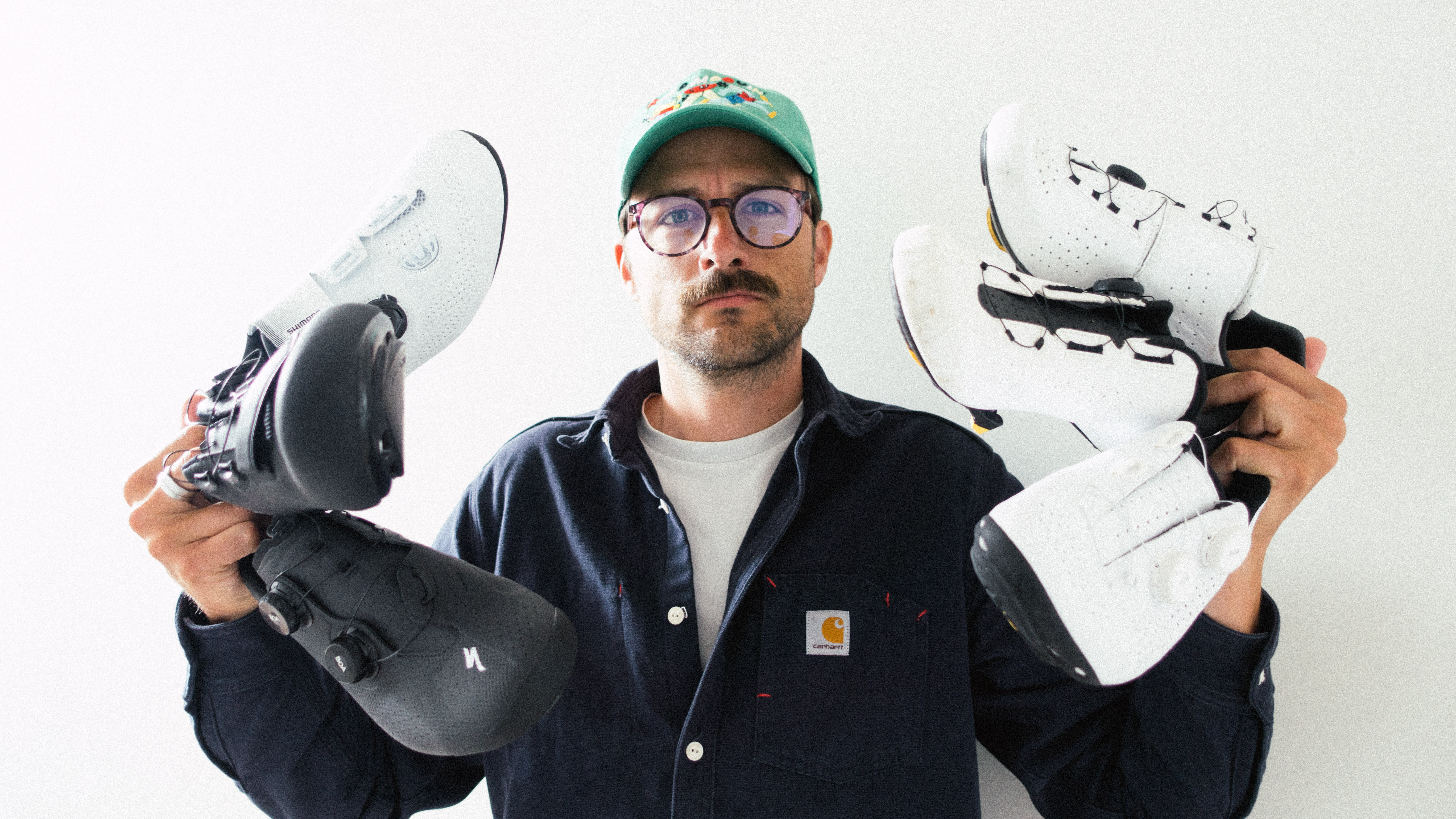
Cycling shoes are key to your performance. If your feet aren't considered wide, you can choose based on style, performance, weight, stiffness, or general vibes.
If, like me, you are cursed with wide feet, your options for best cycling shoes, or the best gravel cycling shoes for that matter, are more limited. For years, I struggled on, forcing myself into narrow shoes and dealing with discomfort, foot cramps, and knock-on knee issues under the impression that that was the norm for cyclists.
Luckily, after an appointment with a bike fitter, I discovered that I'd be far better suited to wider shoes. Until relatively recently, you'd have been confined to either Bont or Lake for truly wide options, but other brands are catching up. Whether it's due to increasing consumer demand, a better understanding of foot health, both, or something else entirely it doesn't really matter. What it means is there's never been a better time to buy wide cycling shoes.
I'm not going to pretend you'll have all the same choices, but I've made it my mission to catalogue all the available options from all the brands on this page and, where I can, add my own experiences with each shoe model.
Now, it should go without saying that my feet and your feet are different, and I'd suggest that for any real expertise you go and see a professional bike fitter, but if you know what you're after then have a browse and hopefully you can find something that is as transformative for you as wide shoes have been for me.
Wide vs High Volume
Before we dive into the list, it’s worth noting that there is a difference between wide-fit shoes and high-volume shoes. Wide-fit shoes use a different, wider last and are often also higher volume (i.e. a bigger volume of void for your foot).
High-volume shoes, in contrast, use the same last (which may well be too narrow for you if you have wide feet) and simply add more material to the uppers to make a greater volume. This goes some way to helping allow your foot more room, but the widest part of your foot will still be bound by the often unforgiving material of the uppers.
In the days of internet shopping, it’s hard to say ‘Try them on in-store’, but that really is the best bet, or at least order from somewhere with a decent returns policy.
When it comes to volume, the stock insoles that come with cycling shoes are almost universally useless, offering little arch support to those who need it. I have high arches, so I need a higher volume fit too, and I swap insoles out immediately on every shoe I try. Again, a chat with an experienced bike fitter will stand you in good stead in this regard.
Bont
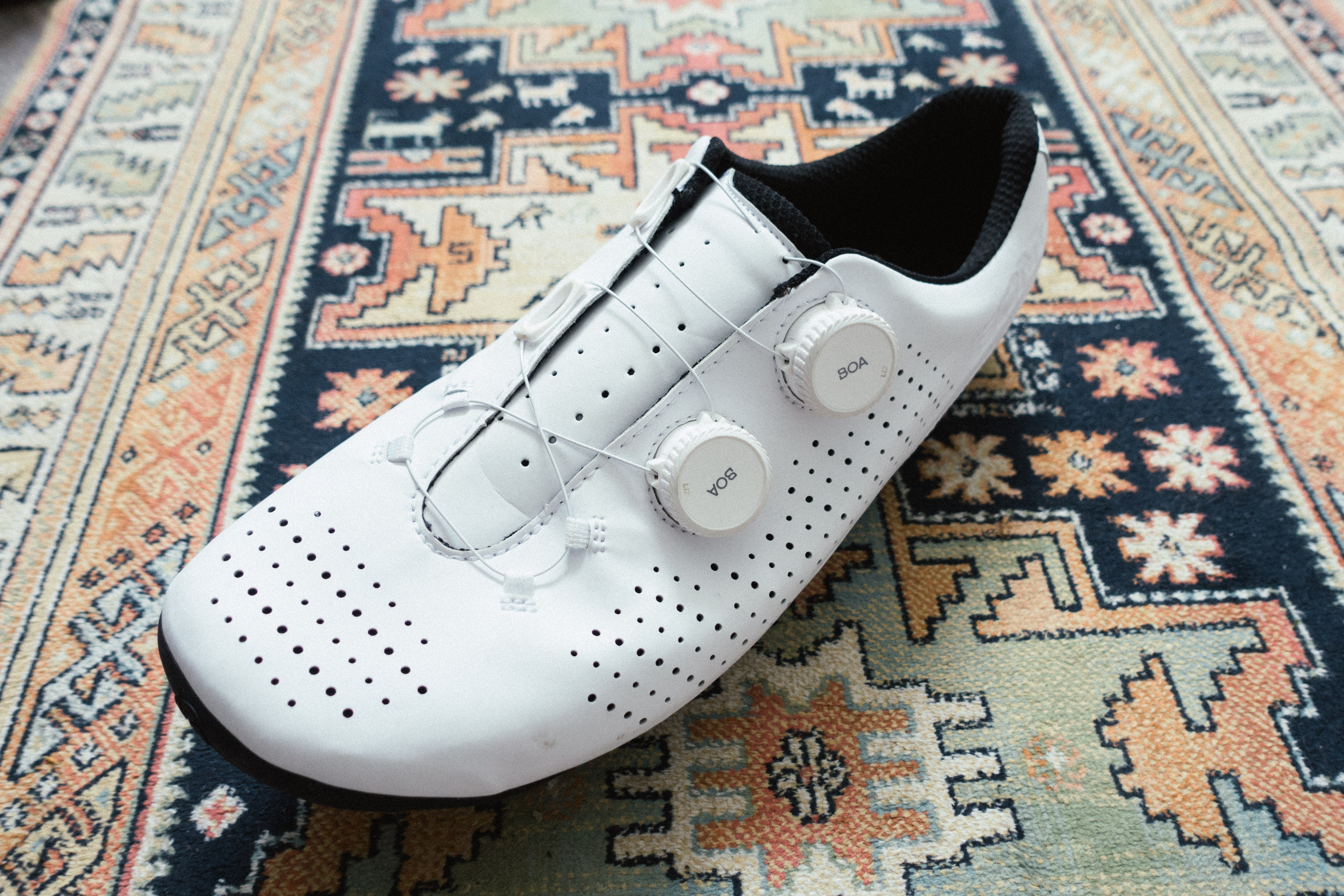
Bont does very well in catering to us wide-footed riders, as well as trying to offer greater room for the forefoot. It offers an array of fits, which are ‘narrow’, ‘standard’, ‘wide’, ‘Asian fit’, ‘double wide’, and ‘double wide Asian fit’.
‘Asian fit’ and ‘wide’ share the same forefoot width but have a narrower heel, a squarer toe box, and a lower arch. ‘Wide’ is 1-2mm wider in the Riot series of shoes, and 3-4mm wider in the Vaypor series, with ‘double wide’ a further 3-4mm wider.
The Vaypor S, Helix, Zero+, Vaypor+, Crono, and Vaypor G come in the full suite of width and shape options, while the Riot, Riot buckle, Riot+ road, Riot MTB+ and Riot TR+ only come in ‘standard’ and ‘wide/Asian’.
That’s a lot of shoes, in a lot of options, which is commendable. The shoes are also heat mouldable, and from experience, this does go some way to helping tune the fit. It takes a few goes to truly get them to feel like they fit just so, usually with the judicious application of the back of a screwdriver, but it doesn’t take a great deal of expertise.
It is worth noting, however, that some Bont shoes have a ‘bathtub’ sole, and almost all are monumentally stiff. With bathtub soles, the carbon sole isn’t flat but curves up at the sides and the front, so if they are just a hair too narrow, then your foot is butting up against solid carbon rather than the flexible material of the uppers. Of all the brands I think Bont requires the most careful size and shape selection if you're after a model with this sort of construction.
I have only personally used the latest Bont Vaypor, Vaypor SL, Riot G and the Vaypor G, so I cannot speak for the entire range, but the newer shoes in the range (Vaypor, Vaypor SL, and Riot G) have done away with the bathtub sole in favour of a flatter forefoot and it's a marked improvement to comfort and makes them far more forgiving if you're a hair too wide.
Both the Vaypor and Vaypor SL are crazy light too, with an extremely low stack height and have excellent foot retention. Both would be a really good choice for high-performance racers who struggle with conventional-width shoes and don't want to sacrifice performance for comfort.
Fizik

You may be surprised to learn that Fizik now offers a pretty wide range of wide-fit shoes, considering it’s an Italian band, which normally means super narrow. Its normal shoes are narrow, but its rapidly expanding wide range is actually wide, and not just high volume.
There aren’t different toe box or heel shapes like there are with Bont, and the range is currently limited to road models only, but this range spans the relatively budget Vento Omna to the top-flight Vento Infinito.
In my experience, the widest and most forgiving is the cheapest Fizik Vento Omna Wide. The material used in the uppers is flexible enough to accommodate a little spillover, but the more flexible, non-carbon sole may not appeal to all. The heel is relatively wide though, and as I have narrow-ish heels there was some heel lift. I also got on well with the Tempo Decos, which do have carbon soles.
The Tempo Overcurve R4 I found the least forgiving of the four models I tried, though it has the same last and sole width at the forefoot. A similar tale with the top-end Vento Infinito, though this was a little more forgiving. I am, I suspect, right at the upper limit of what these shoes can accommodate, and so the differences in the flexibility of the upper material have more of an impact.
I have yet to try the Vento Infinito Knit, but my experience of knitted uppers is that they are more forgiving, and so if you want to be safe then this is likely a decent starting point in the range if you want a carbon sole.
I have been told that wider options will also become available in the gravel range in due course, but at the time of writing, there are none.
Lake
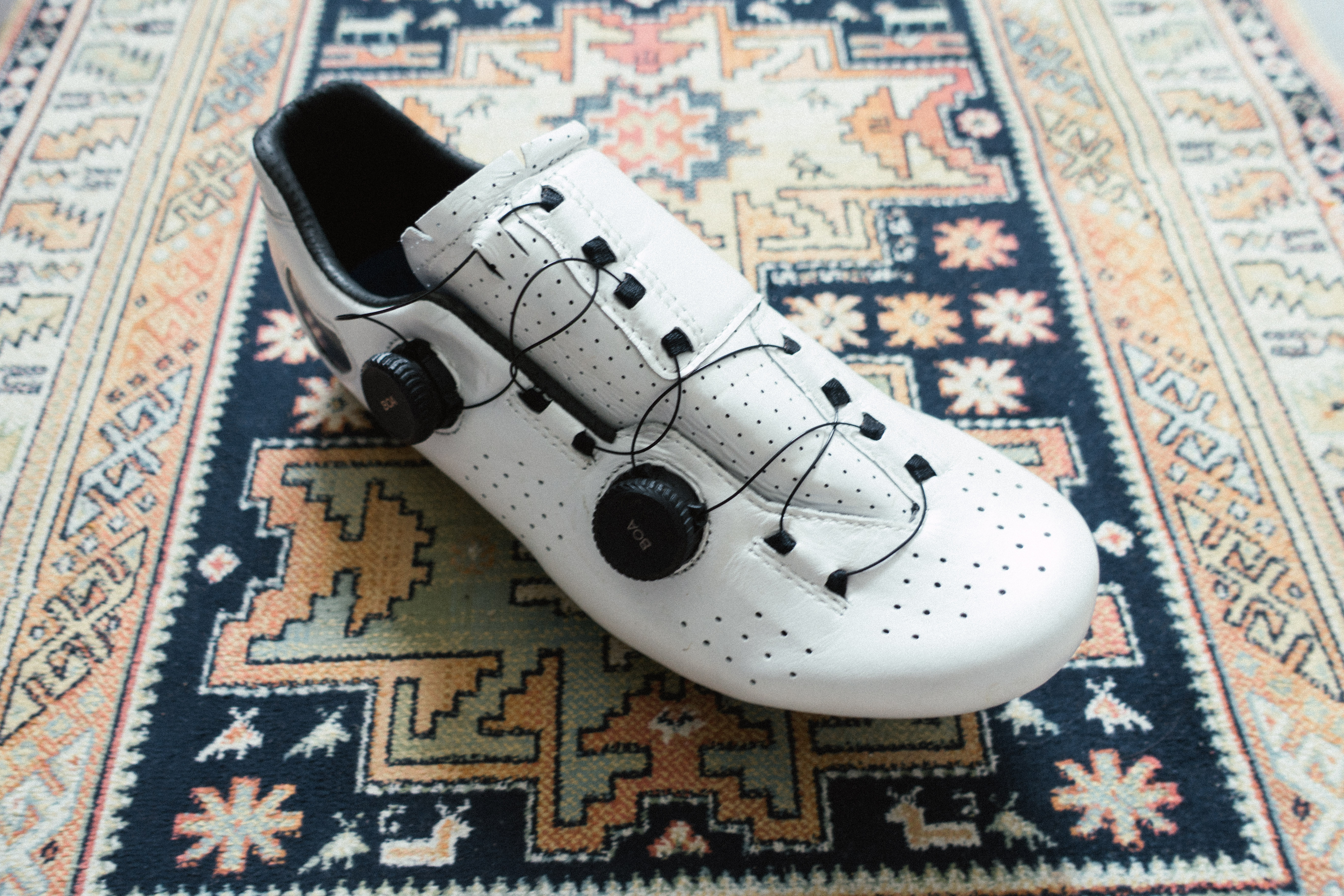
In conversations with my bike fitter, it seems Lake is basically the gold standard for wide shoes, and has a comprehensive size guide followed by a well-presented fit matrix that shows what shoes are available for on and off-road in four widths, three instep heights, four volumes, and two toe box sizes.
At the time of writing, the sizing on Lake’s shoes has changed slightly, with every option shunting in name terms towards a skinnier width. I previously was a wide, but now I am a regular, though this also varies between models; I need wider gravel shoes than I do road ones from Lake, for example.
Your best bet is to thoroughly measure your feet and work with the charts, or a bike fitter. I have used the CX332 (wide), and the new CX333 (standard), which has superseded it. The 332 is still available in some places, and I found the fit of the upper a little easier to dial in, but both are superbly comfortable for my feet and are what I use as a preference despite the weight penalty, unless it’s raining. They have leather uppers, which take an age to dry and are a little more hefty.
Likewise, the Lake MX333 for gravel is my chosen off-road shoe, and while they’re even heavier, they are excellent. A lot of Lake models have a heat-moldable heel, too. My only gripe, primarily with the road models that I’ve tried, is that my outer toes are slightly impinged by the toe box, but given I have only tried two models from the range, there’s every chance that my perfect shoe may still be out there.
Northwave
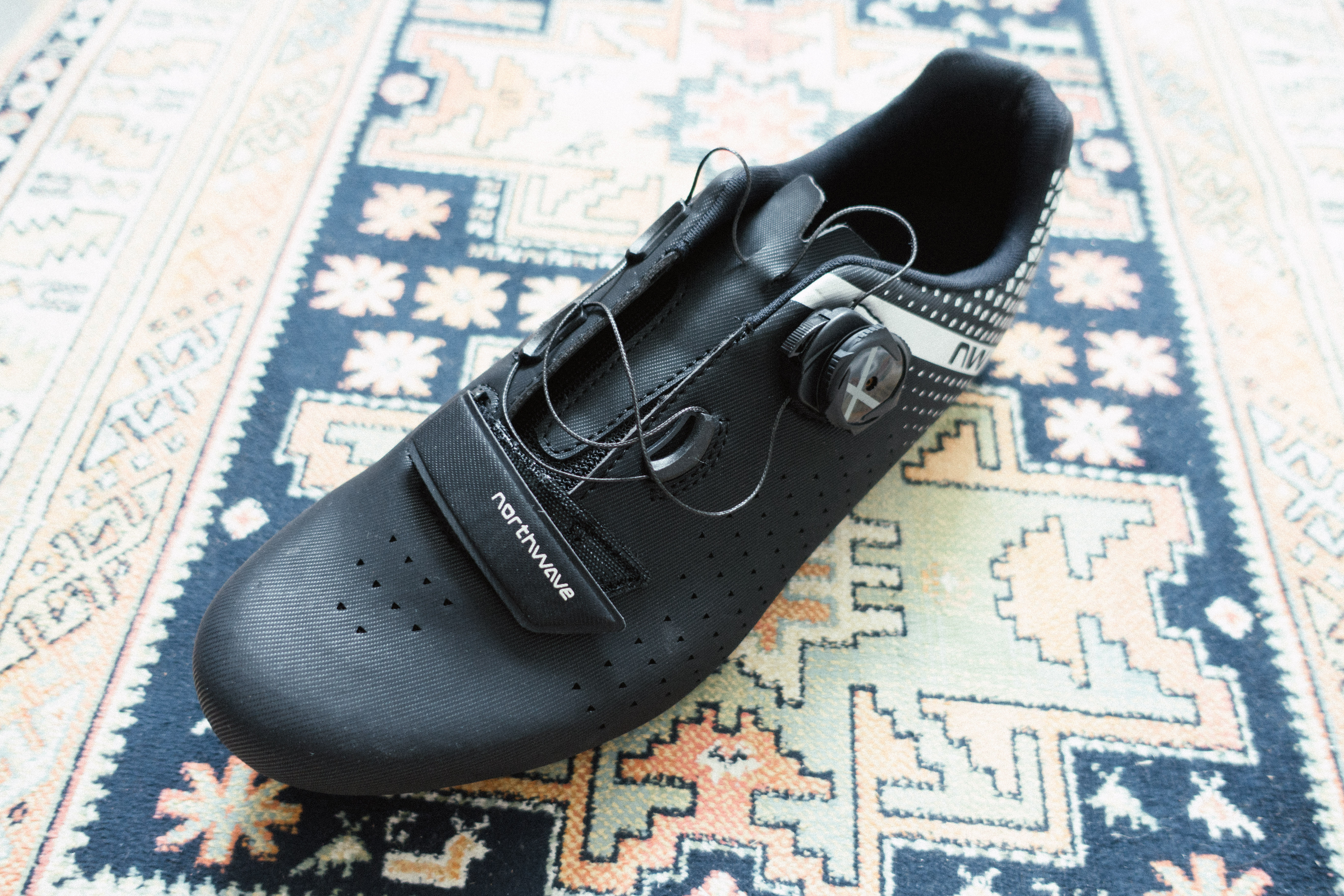
Northwave has two wide models, both at the more affordable end of the spectrum: The Core Plus 2 for road, and the Hammer Plus for off-road riding. I don’t have any standard-width Northwave road shoes myself with which to compare my wide test models, but compared to my Lake shoes they are a full 5mm narrower. Considering this is narrower than Lake’s standard fit I’d suggest that these aren’t really that wide. My colleague, Tom, has a pair of Norwave Veloce Extreme shoes, and while this isn't comparing like with like, the Core Plus sole is 3mm wider than the Veloce.
The uppers are pretty forgiving though, and it’s a different story with the Hammer Plus, which is noticeably wider than the Core Plus. If you like the look of the Hammer Plus then I’d suggest they may be worth a try, but I’d leave the Core Plus.
Since initially writing this guide, Northwave has released a new wide model, the Revolution Wide. I've yet to put any miles into them but on trying them on, they accommodate my feet better than the Hammer Plus or Core 2 Wides. These are the ones to go for, in my opinion, if you're set on Northwave shoes.
Shimano

Shimano offers five wide models, the S-Phyre RC9, RC7, and RC3 for road riders, and the S-Phyre XC9 and the XC3 for those riding off-road. The literature available on the Shimano site doesn’t mention a wider sole, but rather greater ‘ball girth’. It’s safe to say these are higher volume versions, based on the brand’s same Dynalast last, rather than true wide-fit shoes.
In practice, I have tried out the RC7, and they are sadly a little on the narrow side for me. If you've normal-width feet but a high instep then don't overlook the Shimano range, but if you have wide feet I'd shop elsewhere.
Sidi
Another usually very narrow brand of shoe offering a high volume, but not necessarily a wider fit is Sidi. Its website outlines its ‘Mega Last’, which offers greater volume, a higher instep, and a wider heel cup, but no mention of a wider sole.
At the more affordable end, the Mega Last is used on the Alba 2 and Trace 2 for road and off-road respectively, while at the high end it is used on the Ergo 5 and Dragon 5, also for road and off-road, respectively.
While I cannot speak for these Mega Last options from any personal experience, standard Sidi shoes are among the narrowest on the market in my experience, and while a higher volume may make them a little more forgiving, I suggest that they aren’t suitable for those with wide feet.
Since initial publication Sidi has released a new last, the Millenium fit. Shoes based on this last are wider than the Mega Last options, aiming to offer greater comfort. The Mega Last has also disappeared from the Sidi website's fit guide, so I suspect the Millenium Fit is a direct replacement.
In contrast to Fizik, most Millenium Fit options appear to be off-road focussed, and include the Physis, Silvis, Asper, and Asper Lace options, as well as the Ergo 6 for the roadies.
In any case, I haven't personally tried some Millenium Fit Sidis as yet, so I'm reserving judgment for now.
Specialized
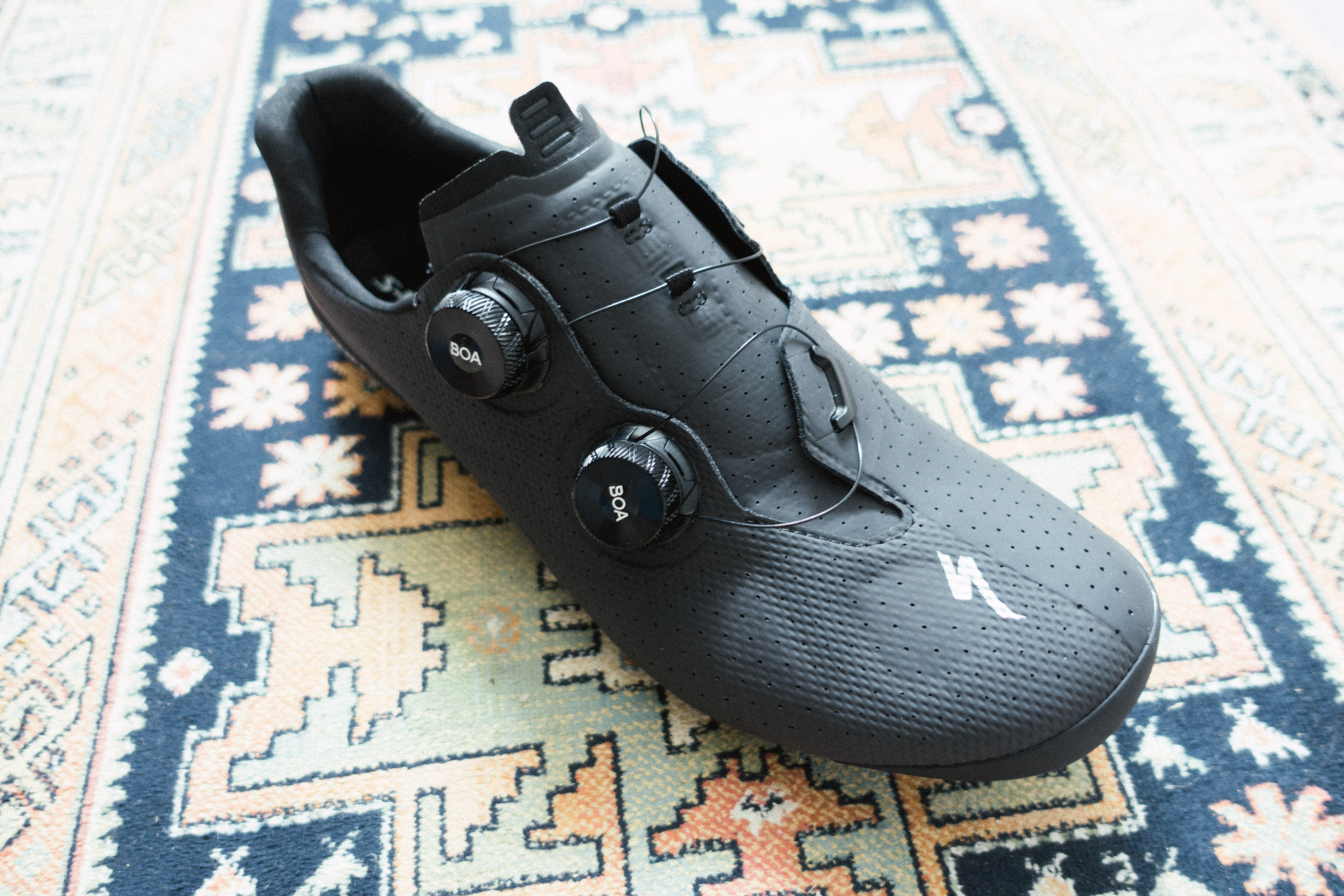
Specialized has one wide offering, a wider version of its S-Works Torch shoes - high-end only. It is however worth noting that Specialized shoes, at the top end at least, have been getting wider. If the Torch fits your bill, and your budget, the wide version is certainly more roomy and in my short time with them so far I've found them to fit well.
I have tried a couple of top-end shoes from the Big S over the years, and while the old S-Works Ares was too narrow for me, by the time 2024 rolled around and I got to using the new S-Works Recon I could ride in them without much discomfort. The S-Works Recon, as an example, is 4mm wider than the specialized standard road width, and a full 8mm wider than the Recon MTB shoe.
As of 2025, I have spent the winter regularly using the wide version of the S-Works Torch and they are just about wide enough (and definitely wider than the standard model, not just a higher volume). If you're after a true race-ready shoe then they're a decent option.
The latest S-Works Ares appears to have been redesigned around a much wider, much more square-toed last. While there isn't a wide option yet, at the time of writing the Specialized site has a 'regular' selector button, perhaps hinting that it's an option to be added down the line.
Stomp Lox
A post shared by stomplox (@stomplox)
A photo posted by on
A slightly leftfield inclusion, but one worth shouting about nonetheless. Stomp Lox hails from Shizuoka, Japan, and makes vibram-soled cycling shoes that are reminiscent of vintage hiking boots.
They are offered in a standard and a wide/Asian fit. My understanding is that the wide fit is wide, not just a higher volume and the shoes feature a boxy, squared-off toe box that looks to allow plenty of room for toes to spread.
I have yet to try them, though I would very much like to. If I am able to get my feet in a pair I will update this to report back, as on paper at least they seem to be an excellent option for wide-footed touring cyclists and commuters, or just any non-performance-oriented rider. Plus, they look gorgeous.
Get The Leadout Newsletter
The latest race content, interviews, features, reviews and expert buying guides, direct to your inbox!

Will joined the Cyclingnews team as a reviews writer in 2022, having previously written for Cyclist, BikeRadar and Advntr. He’s tried his hand at most cycling disciplines, from the standard mix of road, gravel, and mountain bike, to the more unusual like bike polo and tracklocross. He’s made his own bike frames, covered tech news from the biggest races on the planet, and published countless premium galleries thanks to his excellent photographic eye. Also, given he doesn’t ever ride indoors he’s become a real expert on foul-weather riding gear. His collection of bikes is a real smorgasbord, with everything from vintage-style steel tourers through to superlight flat bar hill climb machines.